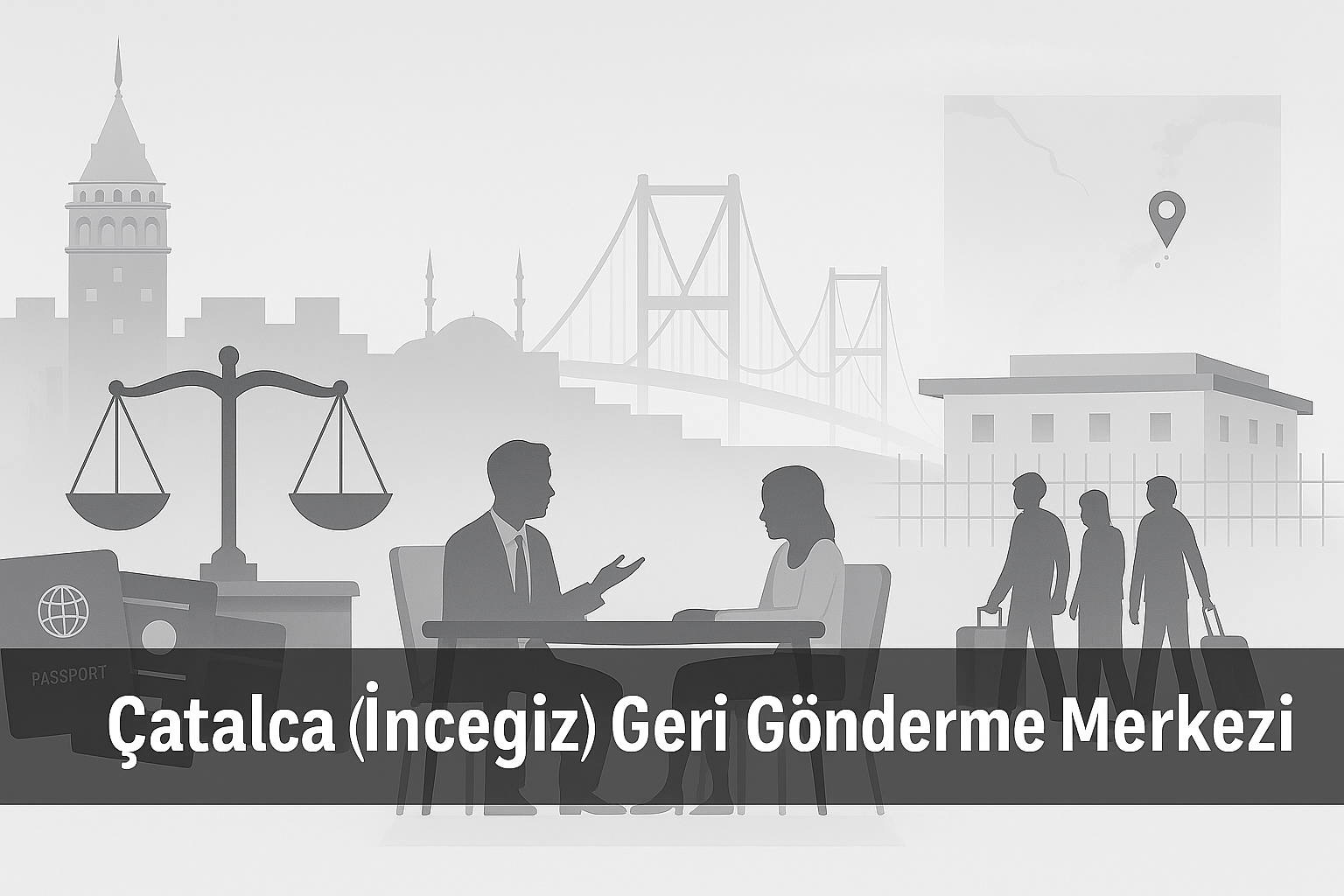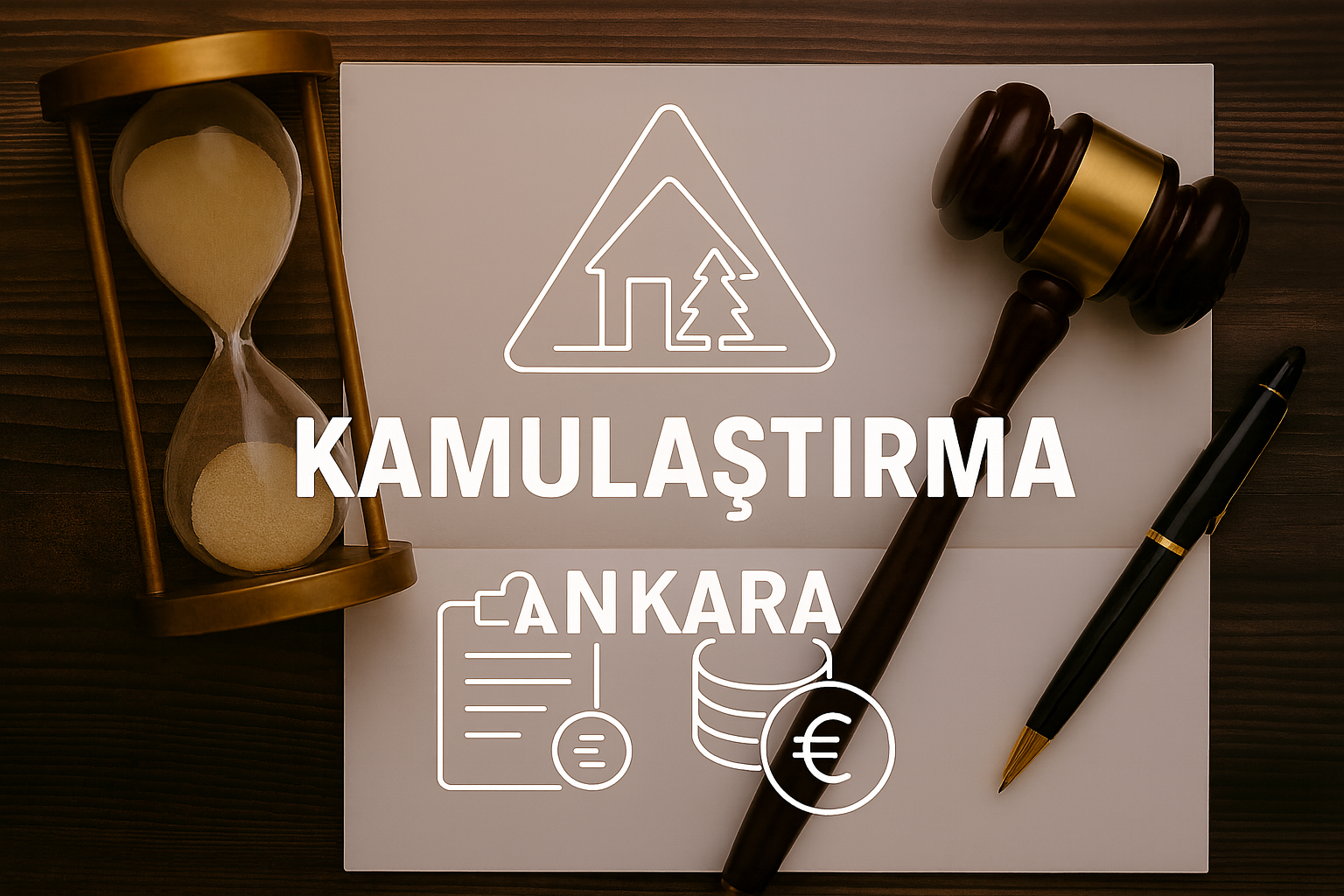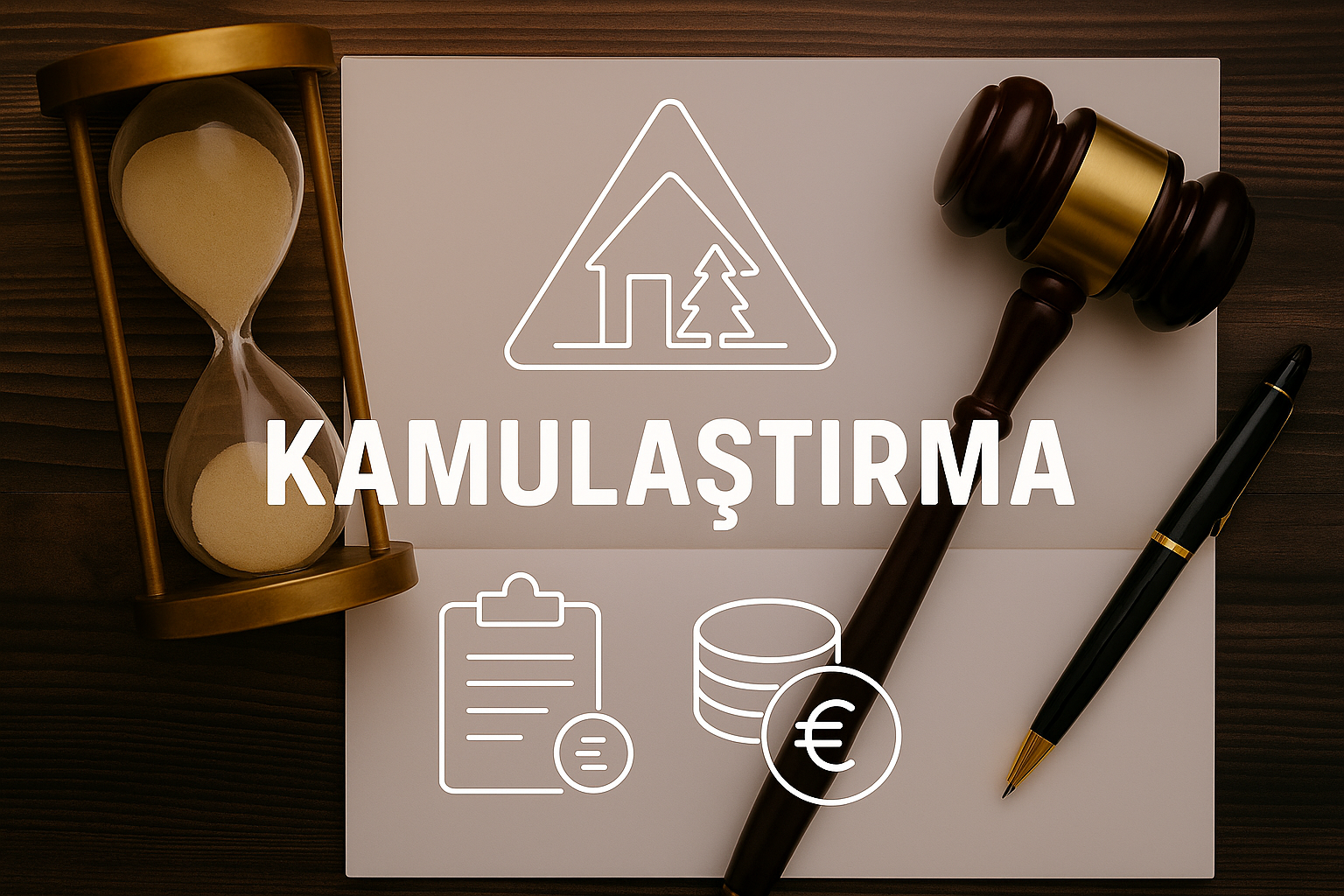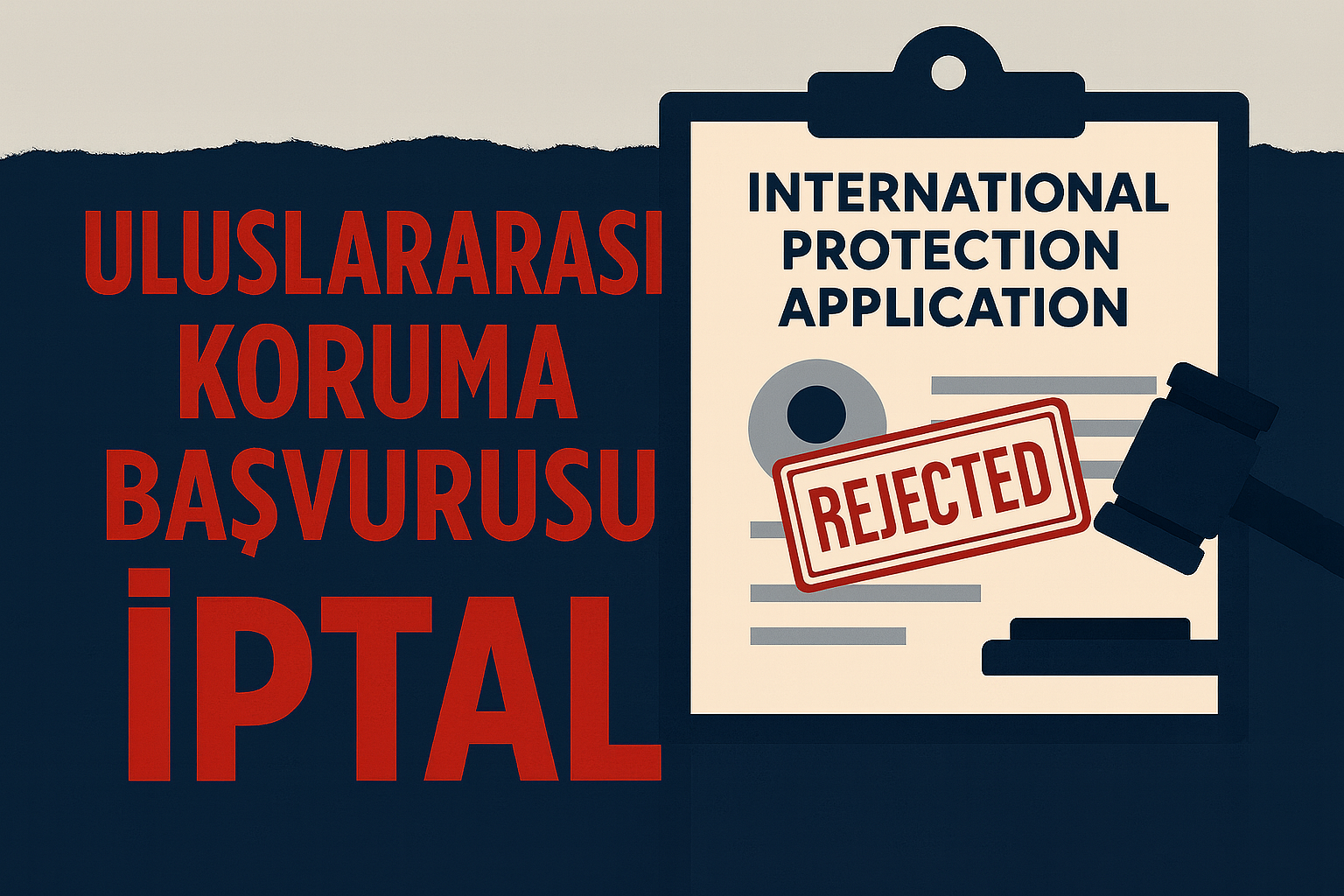Çatalca (İnceğiz) Removal Center: Process, Rights, Appeals, and Lawyer Support
Çatalca (İnceğiz) is one of the removal centers in Istanbul. Across Istanbul, there are also centers in Selimpaşa (Silivri), Arnavutköy, Binkılıç, and Tuzla.
1) Who Is Referred to the Çatalca (İnceğiz) Removal Center? “From Which Police Stations Are They Sent?”
Foreign nationals apprehended on the European Side of Istanbul are generally referred to the Çatalca (İnceğiz) Removal Center.
Foreigners apprehended by law-enforcement units (police, gendarmerie, coast guard) are taken to the appropriate removal center within 48 hours according to the planning of the Istanbul Provincial Directorate of Migration Management.
Legal Basis: LFIP (Law on Foreigners and International Protection) Art. 57 – “Foreigners for whom an administrative detention decision has been taken shall be taken to removal centers by the law-enforcement unit that carried out the apprehension within 48 hours.”
In Practice:
Those apprehended on the European Side are mostly directed to the Selimpaşa (Silivri), Çatalca (İnceğiz), or Binkılıç removal centers; those apprehended on the Asian Side are directed to the Tuzla Removal Center.
This distribution is not an official rule; it may vary according to the capacity and security planning of the Migration Management.
2) Why Are Foreign Nationals Held in Removal Centers?
If a deportation decision has been taken against a person or if the “invitation to leave” process cannot be applied, the person is kept under administrative detention in a removal center.
Reasons for Deportation under LFIP Art. 54:
- Being a member of a terrorist organization or a criminal organization formed for gain,
- Posing a threat to public order, public security, or public health,
- Violating visa or residence periods,
- Entering or leaving Türkiye illegally,
- Using forged documents or making false statements,
- Working illegally or aiding human smuggling,
- Those whose international protection applications have been rejected,
- Foreigners who have committed acts requiring punishment under Turkish law and completed their sentences,
- Those without means of subsistence or deemed objectionable in terms of public order.
Administrative detention period: As a rule 6 months, which may be extended for an additional 6 months if necessary (maximum 12 months).
3) Services Provided at the Çatalca (İnceğiz) Removal Center
- Accommodation and health: Basic living, food, hygiene, and emergency health services are provided.
- Meetings with lawyers and relatives: There is a right to confidential meetings with a lawyer and the right to communicate with consular officials.
- Telephone use: Communication with family, lawyer, or consulate is possible via phones in the center.
- Clothing and personal needs: Basic needs are met; families may deliver clothing and personal items according to established rules.
4) How Does the Çatalca (İnceğiz) Removal Center Process Work?
- Apprehension: The foreign national identified by law enforcement is reported to the Migration Management.
- Referral: Within 48 hours, the person is taken to the appropriate center (Çatalca (İnceğiz) Removal Center).
- Admission and assessment: Identity, health, and file checks are carried out.
- Administrative detention: The situation of the person placed under detention is assessed.
- Invitation to leave / alternative measures: Alternatives such as signature/reporting obligations or address notification may be applied where appropriate.
- Right to bring a lawsuit: Upon entry into the removal center, the 7-day period to file a lawsuit begins.
- Deportation procedures: If no lawsuit is filed or if the lawsuit is dismissed, the person is sent to their country.
5) What Should Someone Do If Their Relative Is in the Çatalca (İnceğiz) Removal Center?
- Establish rapid contact: The 7-day litigation period is critical.
- Obtain lawyer support: An objection to the administrative detention decision and a lawsuit against the deportation decision should be filed.
- Prepare documents: Submit documents such as passport, ID, residence permit, and family status to the lawyer.
- Visits and deliveries: Obtain information on the current rules of the center for delivering clothing and hygiene products.
6) Legal Remedies and Litigation Periods
- Objection to the administrative detention decision: Filed with the competent judgeship; a decision is rendered within 5 days.
- Lawsuit against the deportation decision: Must be filed with the competent court within 7 days.
- Alternative measures: The 6 + 6-month periods and alternatives such as signature/residence obligations may be applied by court decision.
7) Notes About the Çatalca (İnceğiz) Removal Center
- It is one of the important removal centers on Istanbul’s European Side.
- Separate sections exist for women, men, and children.
- There are prayer areas, common areas, and health units.
- Visiting days change periodically; obtain information before going to the center.
8) Contact Information (Çatalca – Istanbul)
Çatalca (İnceğiz) Removal Center Address:
İnceğiz Neighborhood, Çatalca / Istanbul – affiliated with the Istanbul Provincial Directorate of Migration Management.
Migration Management Contact Center (YİMER 157):
A 24/7 multilingual support line.
9) Conclusion and Recommendations
The Çatalca (İnceğiz) Removal Center process combines administrative detention and deportation procedures and is complex. In this process:
- Do not miss the 7-day appeal period,
- Obtain professional lawyer support,
- Ensure complete documentation—all are of vital importance.
10) Legal Support During the Çatalca (İnceğiz) Removal Center Process
If your relative is in the Çatalca (İnceğiz) Removal Center or if a deportation process has been initiated, you should seek support from an expert foreigners’ law attorney.
As Keleş Law & Consultancy, we provide professional support regarding:
- Learning the status of your relative in the Çatalca (İnceğiz) Removal Center,
- Objection to the administrative detention decision,
- Annulment lawsuit against the deportation decision,
- Requests for invitation to leave or alternative measures.
Phone: +90 551 939 66 88
E-mail: [email protected] | [email protected]
Frequently Asked Questions About the Çatalca (İnceğiz) Removal Center
1. Where is the Çatalca (İnceğiz) Removal Center located?
The Çatalca (İnceğiz) Removal Center is located within the boundaries of Istanbul’s Çatalca district, near İnceğiz Neighborhood. The center is affiliated with the Istanbul Provincial Directorate of Migration Management.
2. From which police stations are foreigners sent to the Çatalca (İnceğiz) Removal Center?
In practice, foreigners apprehended on Istanbul’s European Side are generally directed to the Çatalca (İnceğiz) Removal Center.
For example, foreigners apprehended in Esenyurt, Avcılar, Küçükçekmece, Arnavutköy, Başakşehir, Beylikdüzü, Fatih, Zeytinburnu, Gaziosmanpaşa, Bakırköy may be referred to this center.
However, there is no official “police station–center matching list”; the place of referral is determined according to the capacity and logistical planning of the Migration Management.
3. Why are foreigners kept in removal centers?
Persons against whom a deportation decision has been taken or for whom the invitation to leave cannot be applied may be kept under administrative detention.
Pursuant to LFIP Arts. 57 and 54:
- posing a threat to public order or security,
- using forged documents,
- violating visa or residence periods,
- having a risk of absconding or disappearance, etc.,
are among the grounds for administrative detention and deportation.
4. For how long is a foreigner sent to the Çatalca (İnceğiz) Removal Center?
As a rule, the administrative detention period is 6 months, which may be extended for an additional 6 months if necessary (maximum 12 months).
If a lawsuit is filed within 7 days from entry into the center, deportation procedures are stayed during the judicial process.
5. What are the living conditions at the Çatalca (İnceğiz) Removal Center?
Accommodation, food, cleaning, and basic/emergency health services are provided.
Clothing and personal hygiene needs may be met by the center or with family support.
There are common areas.
(As in all removal centers in Istanbul, there are health units here as well.)
6. Is there a right to meet with a lawyer?
Yes. Persons in the Çatalca (İnceğiz) Removal Center can meet with their own lawyers confidentially.
7. What should a person do if their relative is in the Çatalca (İnceğiz) Removal Center?
First, contact the Istanbul Provincial Directorate of Migration Management or the Çatalca (İnceğiz) Removal Center directly.
Through a lawyer, learn the person’s status and legally intervene in the process.
Quickly collect and deliver to the lawyer the passport, ID, residence permit, and family-tie documents.
If necessary, file an objection to the administrative detention decision and a lawsuit against the deportation decision.
(The 7-day litigation period is critical.)
8. Are health services available in the removal center?
Yes. There is a health unit in the center.
In emergencies, persons are referred to the nearest hospital.
The special needs of women, children, and persons with disabilities are taken into account.
9. Can clothing and food support be provided from outside?
Yes, but it is subject to the rules of the center.
Families or NGOs may deliver clothing, hygiene products, food, etc., in accordance with the procedures determined by the administration.
For security reasons, all items are accepted after inspection.
10. Do children also stay in the removal center?
Yes.
Family unity is observed.
Unaccompanied children are accommodated in child support units affiliated with the Ministry of Family and Social Services.
11. How is an appeal filed against a deportation decision?
A lawyer may file an annulment action with the competent court within 7 days from service of the decision.
Filing the lawsuit automatically stays the deportation process.
12. How is an objection filed against the administrative detention decision?
A lawyer files an objection with the competent judgeship.
The judge renders a decision within 5 days, and the decision is final.
13. Can foreigners staying in the Çatalca (İnceğiz) Removal Center communicate with their families?
Yes.
Communication with family, lawyer, or consulate is possible via the phones in the center.
Visits are also accepted at certain times and on certain days.
(The current practice should be confirmed with the center.)
14. Can consulates or international organizations enter the center?
Yes.
The UNHCR (United Nations High Commissioner for Refugees) and relevant consulate representatives may visit the center.
15. How does the process of release or removal from the country work?
The Migration Management decides based on the country’s acceptance status, document procurement, and the judicial process.
During litigation, alternative measures under Article 57/A (e.g., signature obligation) may be applied.
16. What are the capacity and operating characteristics of the Çatalca (İnceğiz) Removal Center?
According to independent reports, the Çatalca (İnceğiz) Removal Center has an approximate capacity of 600–700 persons.
In practice, it is generally operated for male foreign nationals.
(Capacity and operation may change over time; follow official announcements.)
17. What are the visiting hours?
Visiting days and hours may change periodically.
Before going to the center, contact the Çatalca (İnceğiz) Removal Center to confirm the current visiting schedule.
18. Are religious needs met at the Çatalca (İnceğiz) Removal Center?
Yes.
There are prayer areas in the center, and use is allowed within the framework of freedom of religion/worship.
(Practices are regulated by the center’s management.)
19. Can family members coming from abroad visit?
Yes.
Family members with a valid visa or residence permit may visit the center.
Before the visit, they should apply to the center to get information about the conditions and permission process.












